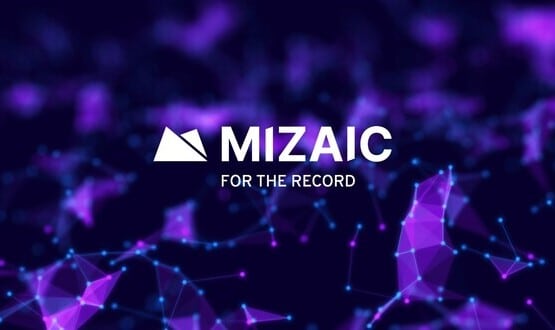Thames Valley and Surrey LHCRE picks Graphnet for regional shared record
- 25 March 2019

Thames Valley and Surrey Local Health and Care Records partnership has awarded a contract to Graphnet to provide a new region-wide shared record platform and population health system.
The new £12.5 million, seven-year contract will focus on building on and joining up existing shared care records for 3.8m citizens across Surrey, the Thames Valley and Buckinghamshire.
Under the £12.5m, seven-year deal, System C Graphnet Alliance will provide its Connected Care platform to link together the current shared record setups – which are run on different platforms – in use across the Thames Valley and Surrey Local Health and Care Record Exemplar (TVS LHCRE).
This includes Connected Care in Berkshire and Frimley; MyCare Record in Bucks; the Oxford Care Summary; and Surrey Care Record.
Bryn Wales, cyber and architecture lead for TVS LHCRE and programme director for Buckinghamshire Integrated Care System (ICS), told Digital health News: “This goes to the heart of the partnership approach in TVS. The care systems involved said they wanted to do this at a care system level.”
But he emphasised that the individual systems will carry on “at a care record level”.
Wales added: “[We’re] putting a single layer and repository and making that available across those care systems. The individual members have already got great products but with this their data will become richer and cross county borders.”
Over 60 health and care organisations are covered by the TVS LHCRE. The £2m a year of recurring costs are being met by six lead organisations, one per each of the six ICSs covered.
The deal includes analytics and advanced population health management tools to support direct care – the aim being to help devise new, improved pathways for the treatment of people with conditions such as diabetes, cancer, and mental ill health.
It is said these tools will also help analyse and understand the needs of the local population as a whole, with specific actions identified to improve clinical outcomes.
Wales said the Graphnet population health solution vision is that any data in repository can be analysed at the population health level.
“We’ll be doing population health at a scale that has not been done before in the UK,” he contended. “Risk stratification, risk scoring and modelling. Identifying individuals and cohorts in a consistent way across the patch.”
Underpinning the whole solution will be Graphnet’s CareCentric shared record platform. This will use national interoperability standards to integrate data from the existing local care records in Thames Valley and Surrey.
Authorised health and social care professionals will be able to access information from patient histories, as well as view test results and care plans, no matter which local organisation they sit in or their patient has received treatment from.
The aim is also for patients to be able to access their records and use digital services and applications that support them to manage their own health and wellbeing.
Wales explained: “This is all based on FHIR and CareConnect profiles. We’ve got a mix of GP systems, and the joy is connecting all of those up, which we think is one of Graphnet’s strengths. This is also very much about [joining up] health and social care.”
He continued: “This year will be about building the platform and repository. We will then move on to building the information governance, open standards and interfaces, including links with up to 10 apps and third-party systems, beginning to go live in the autumn.”
Commenting on the contract, Fiona Edwards – chair of the TVS LHCRE programme board and leader of the Frimley Integrated Care System – said: “The procurement is a significant step forward in achieving our ambition to use the potential of digital technology to make real improvements to the way people are cared for and are able to look after their own health.”
Brian Waters, chief executive of Graphnet, commented: “The scope of this contract puts record sharing at the centre of plans to transform care right across the Thames Valley and Surrey area, with big benefits to citizens and to the health and social services themselves.”
TVS was one of five LHCREs selected by NHS England in summer 2018 and awarded £7.5 million funding. It serves a total population of 3.8 million.
The six health and care systems comprising TVS LHCRE are Buckinghamshire, Oxfordshire, Berkshire West, Frimley, Surrey Heartlands and East Surrey (all ICCs) plus Milton Keynes University Hospital NHS Foundation Trust.
The contract with Graphnet was awarded under the new NHS England Health Information Services framework.





4 Comments
What exactly is the difference between a Local and a Regional Shared Record? PKB is supposed to be the Local Shared Record for Surrey, but now there’s a Regional one too? Are they the same thing or separate? does one talk to the other, or does each have data pushed/sucked into each separately?
This is getting very confusing…
I agree with you, that it is confusing but confusing people has always been part of the plan. The declared intention from the time STPs were introduced (2016?), or earlier, was that local initiatives would be needed to win patients’/the public’s trust, but once these integrated records were a fait accompli, then the whole thing would get joined up. This was only made known to insiders, not of course to the hoi polloi. The DHSC/NHS never sees patients as stakeholders – they are just fodder. Where I live the local Health Partners were holding PPE (Patient and Public Engagement) events to research public/patient attitudes to data sharing with various sectors (Health, Industry, Government) and we were emphatically fed the story that this was all about a purely local initiative. This would have been June 2017 if my memory is correct. Come 2018, I was told by the Chief Accountable Officer of the the local STP, that the STP was part of a regional bid to become a LHCRE. No doubt that will happen, as stealthily as possible.
While I cannot answer your question about Surrey, I imagine that how each region gets to the final destination might vary a bit, but the general direction of travel is clear enough, and alarming enough, notwithstanding the deliberate attempt to avoid alarming us, by camouflaging their intentions behind the fiction of local data sharing. That is obviously not where we are going. Where we are going is the long planned National Data Lake, in which all data users my fish, or possibly joined up regional data lakes – comes to the same thing really.
Is there any way at all that a person living in this region could escape these wonderful benefits? If so, could someone please tell me how it could be done, either with or without giving up healthcare altogether? Foregoing healthcare would fix the problem to the extent that it would avoid the creation of any future NHS record, but how could a person protect their already existing NHS records from all these blessings? Moving to another region would simply be leaping out of the frying pan into the wok. Is there any way to actually escape? I do not jest, I really need to know, as a matter of urgency. Please someone who knows tell me!
So, in other words, I was correct to be suspicious and not trust anything with an NHS label stuck on it. It would now seem an appropriate time to decide what to do with my medical records held by my GP practice, as the ‘Type 1’ objection will cease to exist by this time next year, and once these Local/Regional/National Health Records have been set up, the next move would obviously be to ignore all the objections in order to have a fully complete data set.
Comments are closed.